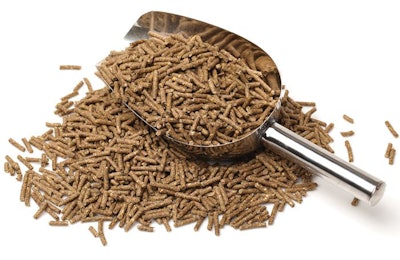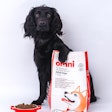
A maximum percentage guarantee for crude fiber has been an integral part of the animal feed label for perhaps the past 100 years. A quantitative declaration of this historically "non-nutritive" component of a feed was deemed necessary to help the purchaser assess the feed's quality and value. However, for at least since I was a graduate student (long ago!), animal nutritionists have argued that analysis for crude fiber was a poor indicator of true nutritive value and advocated for other means of evaluation of fiber content.
At an Association of American Feed Control Officials (AAFCO) meeting a decade or more ago, a very well-respected researcher in the field referred to crude fiber as a "corrupt value." If that is the case, why are we still declaring crude fiber on pet food labels?
Why is crude fiber still analyzed and declared?
To me, this appears to be a "Why is red the most popular color for barns?" scenario. (Answer: "Because it's the cheapest paint. And why is it the cheapest? Because it's the most popular color.") If it wasn't mandated by regulation, I doubt many pet food nutritionists today would care to bother analyzing for, much less declare, crude fiber content on the label. Yet, crude fiber was chosen as the labeling standard because at least at the time the regulations were promulgated, that was the most popular (if not only) means of fiber measurement.
The first attempt to move forward within AAFCO on this issue was with horse feeds. A panel of experts convened to review what "nutritional indicators" (i.e., guarantees) should be required on labels. Either acid detergent fiber (ADF) or neutral detergent fiber (NDF) was expected to be considered as a potential replacement for crude fiber. However, in its final assessment the panel recommended, and AAFCO agreed, to require not only ADF and NDF, but to keep crude fiber on the label as well. So, instead of updating the label to reflect current thinking, this action served to complicate matters and tripled the number of analyses needed to verify fiber content.
Still, there has been progress. A similar expert panel on feed labels for beef cattle is recommending both ADF and NDF but not crude fiber. A proposed change to the Model Feed Regulations regarding the expression of guarantees is to include "and other fiber indicators" after a reference to "crude fiber."
As a side note to the "Pet Food Labeling Modernization" efforts currently underway by AAFCO, there also are recommendations from an expert panel to the AAFCO Pet Food Committee as to what guarantees should be required on pet food labels. One of the recommendations is to replace crude fiber with total dietary fiber. This is the same method as is required for foods for human consumption, and the intent would be to report it on the label by the same terminology as for human foods (i.e., "Dietary Fiber"). The analytical methodology has reportedly been validated to work with a pet food matrix.
Why not stop declaring crude fiber?
One argument against moving away from crude fiber guarantees (on all animal feed labels, not just pet foods) is that it would require amendment of many of the state animal feed laws. Unlike changes to regulations, which are typically accomplished within the agency, modifications to the laws themselves require legislative action (admittedly, a much more complicated, resource-intense and unpredictable process).
However, in my previous survey of state feed laws in 2012 (doubtful much has changed since then), I found less than a dozen states that used the words "crude fiber" in their respective statutes. A few others mentioned "fiber" (but not "crude fiber" specifically), but the majority of state laws I surveyed made no mention of it at all. Thus, the imposition this would have on states overall may not be as arduous as argued. Also, because a number of states expect to have to "open the laws" to implement new Food Safety Modernization Act requirements, anyway, it may be an opportune time to make this change where necessary as well.
Another concern is that if the method of fiber analysis is changed, what happens to the calorie content statement? Presently, except for when calorie content is determined via digestibility feeding trials, calories must be calculated by use of the "modified Atwater" formula, of which the value for crude fiber is part. The values for fiber will be different depending on method, so manufactures would then have to determine crude fiber as well as total dietary fiber content (hence doubling the number of analyses) in order to comply with labeling requirements.
What is needed is a new formula that incorporates total dietary fiber values and has been validated to accurately predict calorie content in pet foods. Sounds like a great graduate student project to me!
For more insights by Dr. Dzanis



















